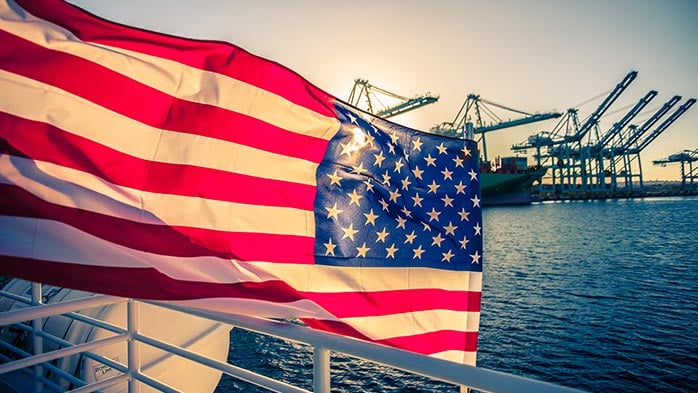China’s coastal steel mills have a strategic advantage due to their scale, efficiency and flexibility between domestic and export markets. Their cost competitiveness, particularly in times of global market downturns enables them to hold advantage, impacting global steel prices and import volumes. Downstream integration into coated and galvanised products ensures sustainable margins. High-cost mills in other regions struggle to compete, often leading to closures.
Chinese coastal steel mills significantly impact world steel prices
China’s massive steel capacity on its coast secures strategic advantage to the country in terms of economies of scale and efficiency in inbound and outbound supply chains. Coastal mills can easily switch between the domestic and export market depending on domestic market performance. The Chinese coastal mills’ 90th percentile site cost has the strongest correlation with steel prices in major importing regions such as the Americas, Europe and Asia.
Chinese coastal mills significantly impact the steel trade given the strong correlation between Chinese coastal mills and global steel prices. China is the number one producer and exporter of steel, therefore global steel prices follow Chinese costs unless there is supply/demand balance disruption in those ex. China markets.
The chart above (specifically the on right hand side) illustrates the direction of causation due to this correlation. The costs associated with Chinese coastal mills are closely aligned to the net import volumes of steel-importing countries. When the 90th percentile cost on the Chinese coastal mills cost curve is lower, countries in Asia and the Americas tend to import higher volumes of steel.
Chinese cost competitiveness rises during economic downturn
Chinese coastal steel mills are even more competitive in times of global market downturns as Chinese domestic coking coal and coke costs drop significantly, improving Chinese mills’ cost positioning on the global cost curve.
As Chinese domestic coke costs are lower compared to international competitors, China can accommodate more low-grade material – that is available at discount – in their iron ore blends for sintering or pelletising, which further improves their cost competitiveness. As a result, export prices from Chinese coastal mills become significantly more competitive compared to domestic steel prices in other regions, enabling China to increase its exports.
Chinese steel industry is highly integrated in downstream operations
Apart from the cost competitiveness advantage, downstream integration helps Chinese steel companies earn sustainable margins. Coated and galvanised integration in China has consistently increased over the years, while in other major steel-producing countries – such as the USA, Japan and India – downstream integration has declined or remained stable.
However, lately we have been seeing a trend reversal in the USA and India. In both regions, mills have a very large buildout of new galvanising and painting capacity, as the galvanised to HRC margin is wide. Therefore, mills are focusing on maximising their downstream production. However, Chinese mills are well ahead in the race, with number one position in the downstream portfolio.
A key contributor to these varying trends among major geographies is the differing end-user requirements. For instance, galvanised steel constitutes only 20–25% of the steel utilised in cars sold in India, while the share of galvanised steel utilised in cars across developed economies surpasses 70%.
The sharp growth in CRC to coated sheet conversion in China coincided with the growth in manufacturing, particularly export-oriented manufacturing of consumer durables and autos. The demand pull in the country has, over the years, increased downstream profitability and encouraged steelmakers to raise conversion rates.
Significant variation in EBITDA margins between HRC and flat downstream products in China has been observed, with the gap widening over the past couple of years due to a weak market for commodity-traded HRC products.
During downturns, coastal China is more resilient than other regions
High-cost mills in other regions struggle to achieve their minimum efficient scale of operations due to direct or indirect impact of Chinese cost competitiveness in the global market. This leads to an increase in fixed and average production costs globally. As both prices and volumes drop, revenue generation takes a hit and mills struggle to service debt, resulting in bankruptcy or permanent closure. As this happens, world steel supply is brought back into an equilibrium state. However, this results in high-cost marginal suppliers leaving the market.
Around 38 high-cost mills in World ex. China with annual production capacity of ~80 Mt/y in total have shutdown permanently over the last 15 years. Using CRU’s Steel Cost Model, we have developed a threshold cost for each region above. Mills above the threshold cost will not be able sustain their operations in a market downturn and so are more likely to close.
Our analysis indicated that during a market downturn, mills in Africa, Central and South America, Europe and North America are at a risk of closure if their crude steelmaking site costs are respectively 13%, 14%, 22% and 30% higher than the 90th percentile crude steel site cost of Chinese coastal mills. During the current market downturn, ~15 Mt/y in total of crude steel capacity in these regions could be closed.
If you would like to further discuss topics in this analysis, please get in touch with the authors.

















